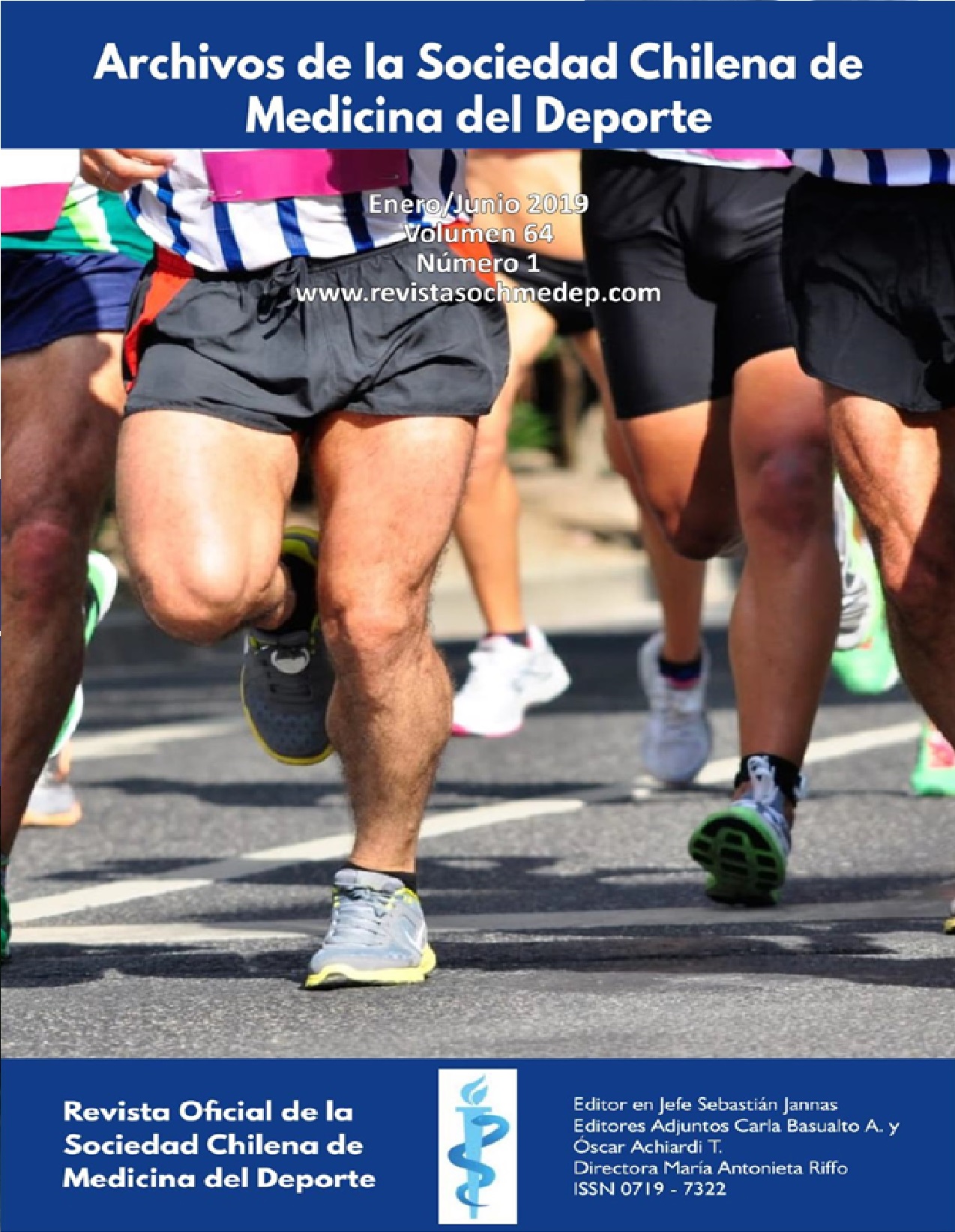Development of an upper extremity prosthesis to compete in velocity tests. A case report
DOI:
https://doi.org/10.59856/arch.soc.chil.med.deporte.v64i1.26Keywords:
Upper limb prosthesis, running prosthesis, Paralympic sportsAbstract
BACKGROUND: In paralympic sports, amputees can use mechanical prosthesis to compete, without changing their classification, but studies have shown that one of the facilitators in sport participation are optimal prosthetic components. In this study, we present the case of an 18-year-old female professional runner, with a left congenital forearm transversal amputation, that felt restrain when running with her regular body-powered prosthesis.
METHODS: To design the prosthesis, we analyzed para-athletics competition videos, the prosthesis weight, aerodynamic concepts and the patient’s needs. To evaluate the new design, we compared the patients running velocity between her regular prosthesis and the new one, patient’s satisfaction using the Goal Attainment Scale (GAS) and her professional performance.
RESULTS: In a 200 m race, the patient scored 29.7 seconds without prosthesis, 28.9 seconds with her old prosthesis, and 28.36 with her new designed prosthesis. Using GAS, the patient scored her satisfaction in +2.
CONCLUSIONS: We were able to design an innovating upper limb prosthesis for running that result as a positive contribution in the patient’s professional performance.
Downloads
References
Silver JR. Ludwig Guttmann (1899-1980), Stoke Mandeville Hospital and the Paralympic Games. J Med Biogr. 2012 Aug;20(3):101-5. doi: 10.1258/jmb.2012.012055.
Tweedy SM, Beckman EM, Connick MJ. Paralympic classification: conceptual basis, current methods, and research update. PM R. 2014 Aug;6(8 Suppl): S11-7. doi: 10.1016/j.pmrj.2014.04.013.
World Para Athletics Classification Rules and Regulations, March 2017.
Bragaru M, Dekker R, Geertzen J, Dijkstra P. Amputees and Sports: A Systematic Review. Sports Med, 2011; 41 (9): 721-740. 5. Deans S, Burns D, McGarry A, Murray K, Mutrie N. Motivations and barriers to prosthesis users participation in physical activity, exercise and sport: a review of the literature. Prosthet Orthot Int, 2012; 36 (3): 260-269.
Grobler L, Ferreira S, Terblanche E. Paralympic Sprint Performance Between 1992 and 2012. Int J Sports Physiol Perform. 2015 Nov; 10(8):1052-4. doi: 10.1123/ijspp.2014-0560.
Gill N, Preece S, Young S, Bramah C. Are the arms and head required to accurately estimate centre of mass motion during running? Gait & Posture 2017; 51: 281-283. 8. Krasny-Pacini A, Hiebel J, Pauly F, Godon S, Chevignard M. Goal attainment scaling in rehabilitation: a literature-based update. Ann Phys Rehabil Med 2013;56 (3): 212-30.
Davidson J et al. A survey of Satisfaction of Upper Limb Amputees with their Prostheses, their Lifestyles and their Abilities. J Hand Ther 2002; 15: 62-70.
Peirano A, Franz R. Int J Angiol 2012; 21: 47-52.
Deuster P, Silverman M. Army Med Depart J 2013; Octuber-December: 24-35.
Van Velzen J, Van Bennekon C, Polomski W, Slootman J, Van Der Woude L, Houdijk H. Clin Rehabil 2006; 20: 999-1016.
Lin S, Winston K, Mitchell J, Girlinghouse J, Crochet K. Gait & Posture 2014; 40: 140-144.
Wetterhahn K, Hanson, Levy C. Am J Phys Med Rehabil 2002; 81: 194-201.
Downloads
Published
Issue
Section
License
Copyright (c) 2019 Archivos de la Sociedad Chilena de Medicina del Deporte

This work is licensed under a Creative Commons Attribution-NonCommercial 4.0 International License.








